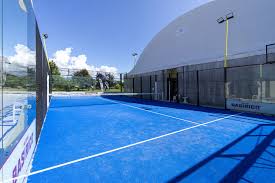

The Rise of Padel in China A Glass Half Full
In recent years, the global sporting landscape has witnessed the burgeoning popularity of padel, a racquet sport that combines elements of tennis and squash. Originating from Mexico in the 1960s, padel has found a strong foothold in Europe and Latin America, and its reach is now extending to Asia, particularly China. This article explores the rise of padel in China, with particular emphasis on the development of venues, the influence of local culture, and the potential for future growth.
The Rise of Padel in China A Glass Half Full
Moreover, the construction of padel courts has been supported by both private and public investments. Urban centers such as Shanghai, Beijing, and Shenzhen have started to embrace this trendy sport, leading to the establishment of various clubs and facilities dedicated to padel. These venues are often designed with local communities in mind, featuring social areas that encourage interaction and engagement among players. The communal aspect of sports is a significant part of Chinese culture, and padel fits perfectly into this social framework.

The synergy between padel and Chinese culture is evident in how the sport is marketed and perceived. Unlike tennis, which is often viewed as an elite sport, padel is marketed as an accessible and enjoyable pastime for all ages and skill levels. Flat courts, shorter play times, and team-based formats enhance the appeal of padel to families and social groups, promoting inclusivity. As padel gains traction, it is not uncommon to see families participating together, fostering a sense of unity and community spirit.
The rise of social media and digital marketing also plays a crucial role in promoting padel in China. Platforms like WeChat and Douyin provide excellent avenues for clubs and players to share their experiences, organize events, and foster a dedicated community. Trendy padel tournaments often go viral, drawing in participants and spectators alike. Additionally, collaborations with influencers and local celebrities have further amplified the visibility of the sport, particularly among younger demographics. The integration of technology and social connectivity positions padel as a modern sport, appealing to the digitally-savvy population.
Challenges remain, however. The infrastructure for padel is still in its infancy, and there are obstacles to overcome, including the lack of widespread knowledge about the rules and strategies of the game. Education and training programs for coaches and players are essential in ensuring the sport’s growth. Moreover, developing a sustainable business model that can attract sponsorship and funding will be crucial for the long-term viability of padel facilities.
In conclusion, the glass walls of padel courts symbolize the potential and challenges that lie ahead for this sport in China. While the foundation has been laid, continuous efforts in education, community outreach, and infrastructure development will be vital in promoting padel nationwide. As interest in this dynamic sport continues to grow, it is evident that padel has a promising future in China. With the right strategies and community support, the sport can thrive, carving out a unique niche in the ever-evolving world of sports. Moreover, the enthusiasm for padel reflects a broader trend of embracing new and diverse sporting experiences, reflecting China’s dynamic cultural landscape in the modern age.
High-Performance Industrial Flooring Solutions China Paddle Tennis Court for Sale
High-Performance Industrial Flooring Solutions Durable & Cost-Effective
Homogeneous Transparent Floor – Durable & Stylish Rubber Floor Solutions
Premium Homogeneous Transparent Floor for Durable & Stylish Spaces Rubber Floor Solutions
Premium Sports Floor Solutions Durable PVC Sports Floor & Rubber Floor for Gyms
Durable Rubber Composite Floor Premium Rubber Floor & Mats Solutions